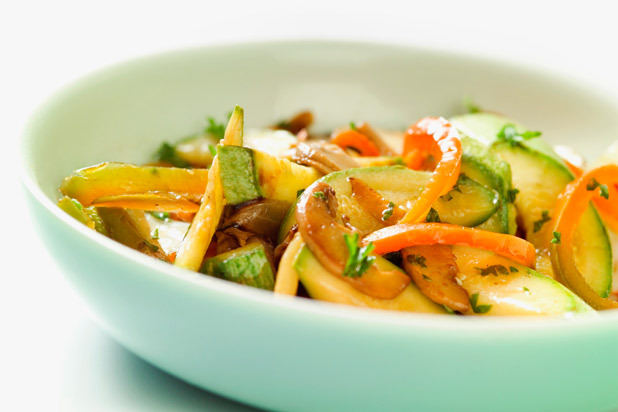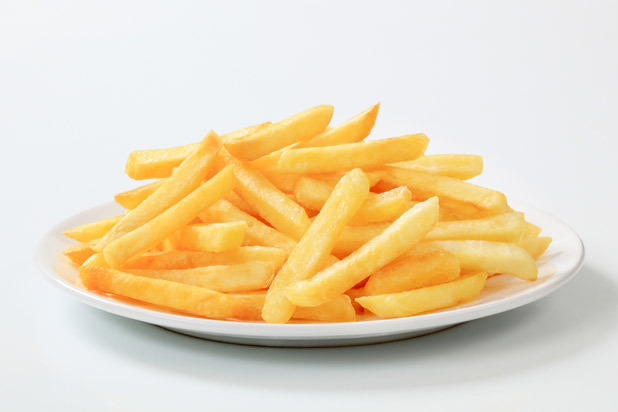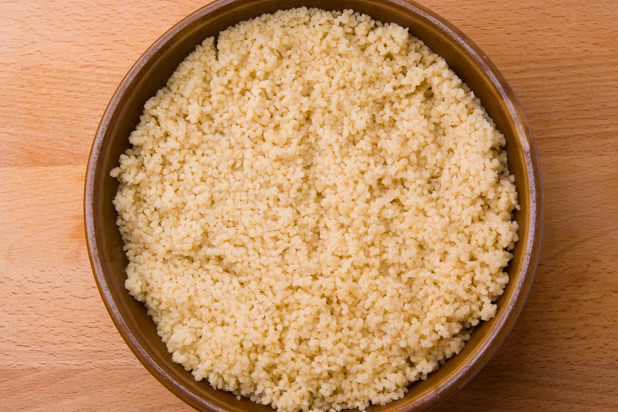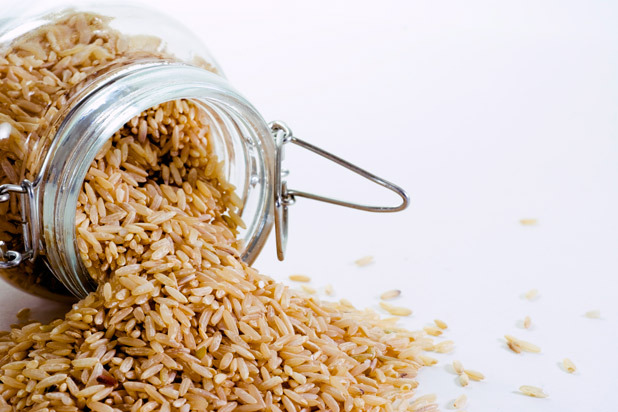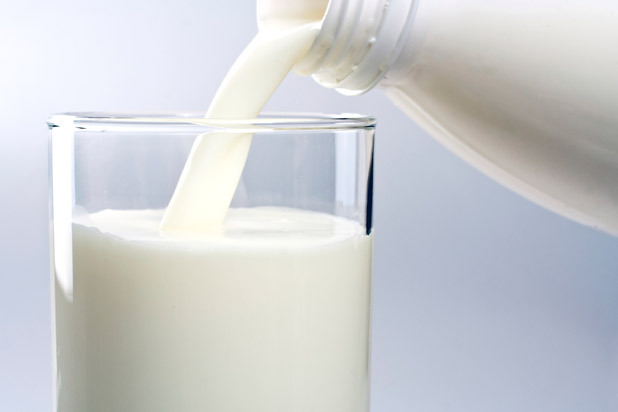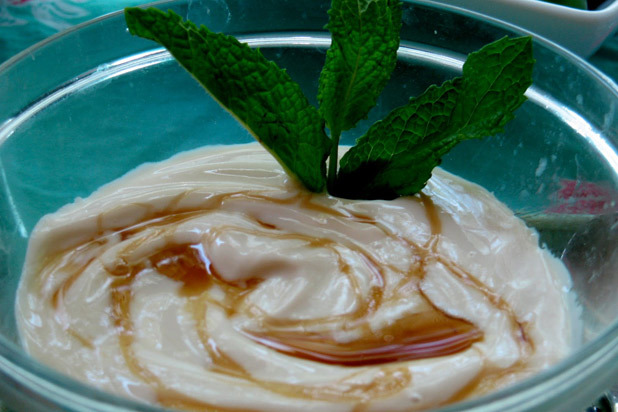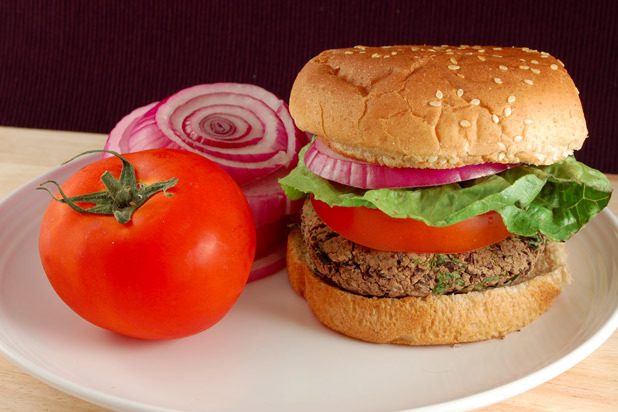What To Eat After A Diabetes Diagnosis Slideshow
Gebert's approach when counseling patients is to tell them to continue to consume all food groups in moderation. She says, "I really try not to take things away, since that's what people expect to hear." One common misconception is that carbs need to go away. That's not true. According to American Dietetic Association (ADA) guidelines, people with diabetes still need 40 to 55 percent of their daily calories to come from carbs.
For a literal illustration, she uses a 9-inch plate. She splits it in half and tells people that one-half of the plate needs to be filled with leafy greens or non-starchy vegetables, such as beets or carrots, and the other half needs to be filled with about 3- to 4-ounces protein, and about a half-cup of something starchy.
2. Well, There Is One Thing That Has to Go
And that's soda and other sugary beverages. And fruit juice, too, believe it or not. She says just one 4-ounce serving can cause blood sugar levels to spike by as much as 40 points (milligrams per deciliter, for people who really, really have to know) in as little as 15 minutes. That's not even half a glass. For a substitute, she suggests freshly blended vegetable juice, which contains fiber that will slow the release of glucose into the bloodstream.
3. Can I Have a French Fry?
Maybe one. Actually, french fries, though generally made from Russet potatoes, a variety bred for maximum starch content, would seem to be the worst thing to eat, Gebert says there's worse. Instant mashed potatoes are a big no-no. Why? Mashing anything increases surface area and hence the rate at which glucose gets released into the bloodstream. Instant mashed spuds have the highest glycemic index out of any food, meaning they raise blood sugar in a set period of time the fastest out of any food.
She suggests going for waxy potatoes, or even better, sweet potatoes, which have more fiber, iron, magnesium, vitamin A, and beta carotene by weight than their regular counterparts.
Click here to see the Baked Sweet Potato Fries with Parmesan and Cinnamon Recipe.
4. What About Pasta?
Ah yes, the inevitable question. The days of regular old pasta may be gone, but there are a variety of excellent substitutes out there. There's whole-wheat pasta, of course, but if that's not your speed, there are also quinoa- and spelt-based pastas as well. And instead of quinoa-based pastas, she is also a champion of straight quinoa, which, like tofu, can take on the flavor of so many different things, and is versatile enough to function as a side dish at dinner or prepared more like a hot cereal for breakfast. Which brings us to our next item...
5. Someone Always Asks About Grits
Yes, believe it or not, Gebert says that someone always asks about grits. This is a tough one. She says that some people are "more willing to give up bread at lunch than grits at breakfast." Some people are just really passionate about grits, especially those who grew up eating them. She says, if you absolutely must have grits, the problem doesn't really lie with the fact that it's a processed food, or that it doesn't have as much fiber as it should (these are problems, too, though). The problem, most often, lies in the preparation. Too much butter. And also in how much you eat. Portion control strikes again. So go ahead, keep eating grits, but cut back a bit.
6. Rice
Some patients have hard time giving up pasta, some have trouble with grits, and others, rice. Brown rice is the way to go since it contains more fiber than processed rice and slows the release of sugar into the bloodstream. Gebert says just to be careful of portion sizes. One cup of cooked rice contains 45 grams of carbs, or about three servings. Women should only have three to four servings of carbs in one meal, while men should only have about four to five servings — so that one cup of cooked rice might be it for the whole meal. No more carbs after that.
7. Milk, the Dark Horse in the Room
This one sometimes surprises patients. Milk contains lactose, a sugar that is found in dairy products. When broken down by the body, however, it all turns to glucose, which can mean a spike in blood sugar levels. Gebert says that milk is OK to drink, but make sure to limit it to just two 8-ounce servings per day. Since most cups these days are much larger than 8-ounces, she says that it's a good idea to purchase a measuring cup.
8. And While We're Talking About Milk…
Yogurt is OK to eat, too. Gebert prefers Greek yogurt, which is creamier (and perhaps, more satisfying to some). But they also often contain fewer carbs per serving than regular yogurt. A 6-ounce container of Greek yogurt usually contains about 14 grams of carbohydrates — just shy of 15 grams, which is considered one serving of carbohydrates.
Click here to see the Strawberry-Ginger Honeyed Yogurt Recipe.
9. Resistant Starch and Eating Skins Are Good
Gebert suggests working more legumes such as black and red beans into one's diet since they contain a type of starch different from that found in most other foods — resistant starch. Resistant starch is released more slowly into the bloodstream. It still gets broken down into glucose eventually, but at a much slower rate. In addition, as a general rule of thumb, she says it's a good idea to leave the skin on fruits and vegetables (when edible) because also slow the release of glucose into the bloodstream.
10. The Biggest Question of All: Pizza
The days of chowing down on greasy slices are probably over, but she says it's still possible to have pizza occasionally. Look for pizza made with whole-wheat dough, and instead of piling on the meaty toppings, add more vegetables. Limit portion sizes (take one slice instead of three) and put more salad on the plate instead.
